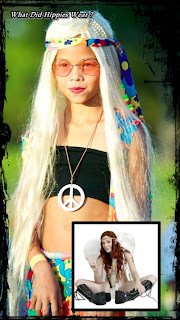 |
| A History of Rasta Dialect For Students of Jamaican Patois |
At first glance, the student of Jamaican Patois would assume that all Jamaicans speak Jamaican Patois, but a unique group have their own dialect. This unique group is none other than the Rastas. The Rastas continue to have a lasting impact on Jamaican culture, reggae music and the world. The most famous Rasta of all time was the late Bob Marley, but there are many others that are carrying on the torch. It is important to know that not all Jamaicans are Rastas nor are all people with dreadlocks. Similarly, not all Jamaicans use the vocabulary of the Rastas. In order to understand or should I say "overstand" the language of the Rastas, it is important to learn the history of Rastafari.
Rastafari is one of the most recognizable aspects of Jamaican culture. Although, Rastas believe that Rastafari originated in Africa, Jamaica had a major role in the formation of Rastafari. The first Jamaican to have a major influence on Rastafari was Marcus Garvey. Marcus Mossiah Garvey was born in Jamaica under colonial rule in 1887. After being exposed to Blacks in Central and South America and meeting Blacks from all over the world while living in London, Garvey became committed to the improvement of Black people. In 1914, Garvey established the Universal Negro Improvement and Conservation Association (UNIA) and the African Communities League. Garvey, the original Pan-Africanist, was the one who exposed the Black people in the New World to the importance of Africa and pointed to a redeeming African King. He would not know that the symbolic king would be Haile Selassie, Jah Ras Tafari. Garvey became a prophet in Rastafari for telling the would be Rastas to look east for a king, but it was the Preacher Leonard P. Howell that started the Rastafari way of life.
Leonard P. Howell, a preacher in Jamaica, became the first person who took the crowning of Haile Selassie I seriously and preached H.I.M.'s divinity throughout Jamaica. He was also seen as a rebel in Jamaica for publicly denouncing the British Government, recognizing and defending the divinity of H.I.M. Haile Selassie I, preaching the superiority of Black people and preparation to return to Africa. Howell was arrested and imprisoned for two years for disturbing the peace. Once he was released, he started a Rasta community in the hills of St. Catherine. It was the combination of the oppression and struggle of Black people that cemented the Rastafari way of life. These events also helped in the development of the Rasta language.
Here are some key points related to the Rasta language:
1) The Rasta language is the vibration of resistance to the system of Babylon (the world of the oppressors).
2) This resistance is available through word, sound and power.
3) The language of the Rasta is part of the way of life.
Rastas speak a twist of standard English because in colonial Jamaica, the original African languages were drastically altered over time by British rule and enslavement. Even though in present day Jamaica, all Jamaicans speak Patois (Patwah), Rastas speak a sub dialect of Patois. This is important to know for people who want to learn to speak Jamaican. In the Rastafari language, words are power. The first thing one needs to know is the replacement of the word Me with I. The personal pronoun "I" is the most important word in the Rasta dialect. To Rastas, there is is no "Me", there is no "You" and there is no "We" or "Us" - there is only "I and I". Everyone is an "I", so there is no need for second person dialog. Every person is a first person.
The use of the "I" as a sound is also present in Rasta speech. The sound can be found in many words such as:
I-tal (vital)
I-man (me or you)
I-ternal (eternal)
I-preme (supreme)
I-dren (brethren)
I-sire (desire)
I-ceive (receive)
I-hold
Another key concept to the Rastafari dialect is "seeing". The eye is the organ of sight which is why Rastas (and non-Rasta Jamaicans) use the words "Seen" and "Sight,", as in "Do you see" or "see it?" To see something is to accept reality. Seeing is also important to the name Selassie; the word, sound and power of "See" comes at the the beginning and end of his name - See lass-see.
The way words are twisted is another aspect of the Rasta dialect that is important. For example, "Understand" is replaced by "Overstand" and "Oppress" is replaced by "Downpress".
The other aspect of Rasta speech is the double meaning of words. Here are some of theRasta dialect vocabulary words with double meaning and their Rasta meanings:
morgue (refrigerator)
runnings (happenings)
penetrate (admire)
red (angry)
more time (see you later)
The list can go on and on, but the important thing to realize is that Rastas have their own dialect inside of Jamaican Patois, So if you want to learn to speak Jamaican and about the culture, you have to know about the Rastas.





